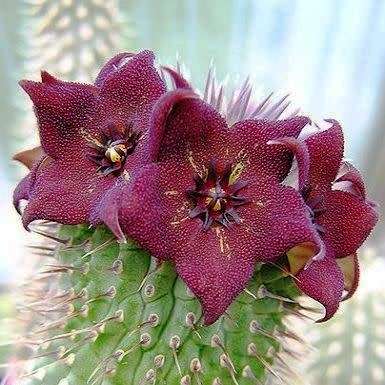
Hoodia ruschii Seeds - Namibian Medicinal Succulent Stapeliad Exotic
Check my rate
| Main centres: | 1-3 business days |
| Regional areas: | 3-4 business days |
| Remote areas: | 3-5 business days |

| Main centres: | 1-3 business days |
| Regional areas: | 3-4 business days |
| Remote areas: | 3-5 business days |

Hoodia ruschii Seeds
Namibian Succulent

Hoodia is a genus of 13 species in the flowering plant family Apocynaceae. They are stem succulents, described as cactiform because of their remarkable similarity to the unrelated cactus family. They can reach up to 1m high and have large flowers, often with tan colour and strong smell. They fall in the group of succulents, collectively known as Stapeliads. Many Hoodia species are protected plants, typical of the Namib Desert, ranging from Central Namibia to southern Angola, especially in plains and rocky areas. Common names include "Bushman's Hat" and "Queen of the Namib". Several species are grown as garden plants, and one species, Hoodia gordonii, is being used as an appetite suppressant. They grow well in pots and rockeries. The unusual flowers are flat and saucer-like in shape and red, purple to brown or mottled dark yellow in colour. Flowers form prolifically near the stem tips in summer. The short stems are many angled with white spikes appearing at short intervals on each angle. Stems are single or branch forming, they occur in variable shades of green. Medicinally it is widely used traditionally by the San people of southern Africa as an appetite suppressant, thirst quencher and as a cure for severe abdominal cramps, hemorrhoids, tuberculosis, indigestion, hypertension and diabetes. Hoodia ruschii commonly known as Queen of the Namib and African Hats is a native of Namibia where it can be found in the Tiras Mountains. Hoodia ruschii can reach a height of 50 cm. The green stems are irregularly angled. The flowers reach 4cm in diameter and are reddish-brown in colour. The corolla is yellow around the corona and is papillate. It enjoys full sun or light shade and little water. This species is threatened due to overharvesting as it grows close to Hoodia gordonii and can easily be misidentified.
